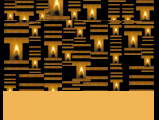RACHEL CHEUNG Piano Recital
Monday (12 October 2020)
RAMEAU Pieces de Clavecin (Selections)
Les Cyclopes – L’entretien des muses - La Poule
DEBUSSY Estampes
FAURÉ Nocturne No.6 in D flat major, Op.63
FAURÉ Impromptu No.2 in F minor, Op.31
RAVEL Toccata from La Tombeau de Couperin
SCHUBERT Sonata in B flat major, D.960
The first half of Rachel Cheung’s piano recital follows the evolution of French keyboard music over the centuries. It begins in the Baroque period when composers like Jean-Philippe Rameau and Francois Couperin held sway with their numerous works for the harpsichord, also known as the clavecin.
From 1706 to 1727, Rameau wrote three sets of pieces, each united by a commonality of key. The contrasted pair of Les Cyclopes and L’entretien des Muses (Conversation of the Muses) come from the 1724 set in D minor. Both refer to characters from Greek mythology, the cyclopes being the single-eyed brothers who deligently cast thunderbolts for Zeus, while the Olympus-dwelling muses being the inspirational goddesses of the fine arts. From the 1727 set in G major/minor is La Poule (The Hen), a playful number that mimics the incessant clucking of fowl. One of his most popular works, Rameau himself notated the opening bars with that unmistakeable call: co-co-co-co-co-cocodai!
Time travel forward almost two centuries and one arrives at the impressionist sound world of Claude Debussy. Estampes (Imprints), a suite of three contrasting pieces, was composed in 1903. Pagodes (Pagodas) was his impression of the Far East, where pentatonic scales and the sounds of Balinese gongs and gamelan filled the incense-laden air. In La Soirée dans Grenade (Evening in Granada), the rhythm of a slow dance from Andalusia is punctuated by strumming chords of the guitar. Debussy’s near-perfect evocation of Spain is all the more astonishing given his only experience of the country was one short visit to Madrid. The final piece Jardins sous la pluie (Gardens in the Rain) simulates the pitter-patter of rain in a wind-swept park, where Debussy also quotes two well-known children’s songs Do do, l’enfant do (a lullaby) and Nous n’irons plus aux bois (We will no longer go to the woods). See if your ears can spot these popular ditties.
Gabriel Fauré was a writer for the piano par excellence, even if much of his piano music is underrated. Chopin was a major influence, down to his use of titles like Préludes, Impromptus, Barcarolles and Nocturnes. His melodies are lyrical and luscious, reflecting the world of the belle époque, with intriguing harmonies looking forward to Debussy and Ravel. His Sixth Nocturne, composed in 1894, is considered one of his finest pieces. Its languorous melody is not immediately apparent, almost elusive, as it flits between different keys. Like in his later works, Faurée expresses a “private passion and isolation, alternating anger and resignation,” according to an eminent critic. By contrast, the Second Impromptu is a restless tarantella (a Neapolitan dance in 6/8 rhythm), contrasted with a lyrical central section in F major.
Maurice Ravel’s Toccata is the sixth and concluding movement of his piano suite La Tombeau de Couperin. Composed between 1914 and 1917, each movement was a baroque dance dedicated to a friend who died fighting Germans in the First World War. Couperin (1668-1723) was the great French clavecinist before Rameau, with the multi-movement work being a memorial to the baroque suites of antiquity. The Toccata calls for a swift and light touch (toccare is Italian for touch) with its repeated notes alternating between both hands, working up to a coruscating climax and brilliant end.
The final trilogy of Franz Schubert’s 21 piano sonatas was completed just two months before his tragic and untimely demise in 1828. Like many of his late works, including his Ninth Symphony and String Quintet in C major, these were only published posthumously. Given the music’s immense popularity among performers and listeners, he unfortunately never got to enjoy the much-deserved commercial success of his labour.
The final Sonata in B flat major (D.960) is characterised by an autumnal quality and heavenly length. Depending on whether the pianist plays repeats, a performance may last from 45 minutes to almost an hour. This is an hour well spent, beginning with a broad and lyrical melody that seems to spell an eternal timelessness. The repose is occasionally interrupted by low trills on G flat, sounding like distant rumbling thunder. The impending storm never arrives but there are surges of tension that varies the mood on and off, notably when the pianist performs the exposition repeat. The second movement is a reminiscence of Schubert’s world of lieder, the feeling of intimacy heightened with key changes from the frost of C sharp minor to radiating warmth in A major for the central section.
The first two movements (both slow) are disproportionately long compared with the final two fast movements. The Scherzo is light and breezy, played delicately (con delicatezza), contrasted with an off-kilter dance-like trio section in the minor key. The finale opens with a held G octave, a recurrent punctuation mark of this movement, from which a Hungarian-styled dance in C minor emerges. After several modulations and mood changes, the music eventually returns to the home key of B flat major, but that is in the Presto coda, which closes the sonata (as with Schubert’s own life) in a brief but emphatic blaze of glory.
Programme notes by Chang Tou Liang



